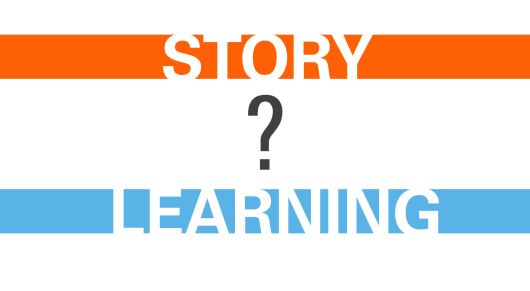 If you read the quotes from What People Say About Stories or you’ve done any amount of research on brain science and learning, it is evident that stories are a powerful tool for learning, but most research materials are still vague about how it works. How can stories be constructed to best connect to learning? It’s actually very simple, but often these story design elements are omitted or weak.
If you read the quotes from What People Say About Stories or you’ve done any amount of research on brain science and learning, it is evident that stories are a powerful tool for learning, but most research materials are still vague about how it works. How can stories be constructed to best connect to learning? It’s actually very simple, but often these story design elements are omitted or weak.
There are two basic elements to a story that connects strongly to learning:

Characters + Conflict. The elements are simple. And though stories can be complex and daunting to write, with these two elements, a story can be created that supports learning. But do all stories with characters and conflict connect with learning? You may have encountered something like this in a training course: “Carissa wanted to apply for a second job with a company that does business with her company. What should she do?” Carissa has a conflict (in this case, literally, a conflict of interest). Do I care about Carissa? Not really. At this point, Carissa is just a name, not a character. Is the conflict strong? Mm, probably not strong enough to make me want to know more. Let’s take the principle one level deeper:

Relatable characters & strong conflict that produces a desire in the learner for resolution.
Ah! Relatable characters! Characters I care about! That’s the first step in creating a stronger connection to learning. What if I knew that Carissa was a top-performer in her department and frequently asked for more work? What if I knew that she had some school loans to pay off and could use the extra income? And what if, as in real life, it wasn’t quite so clear cut that the duties she would perform for the second company would be in conflict with her current company? The more I know about her and the more plausible her circumstances are, the more I care about what happens to her.
Conflict. Conflict should be strong enough to make me want to know what happens next. Well-developed characters need strong conflict. Conflict produces the desire for resolution. And that is exactly where the door opens to training. I want resolution. I want to know what Carissa should do. You can teach me what she should do by connecting my desire for resolution to the learning content. This solidifies a strong connection between the story and what I’ve just learned. The stronger the conflict, the stronger the story’s connection to learning.
Perhaps, if Carissa’s story stopped right there and asked, “What should Carissa do next?” it would be enough to make me want to know more. But what if the stakes were raised? Carissa applies for and gets the second job and the story reveals that her judgement is compromised because she knows insider information. Suddenly she realizes that she’s made a grave error–one that might cost her job and reputation. With more at risk, and because I have some empathy for Carissa, my desire for resolution is stronger and the connection to story and learning will be long-lasting.
